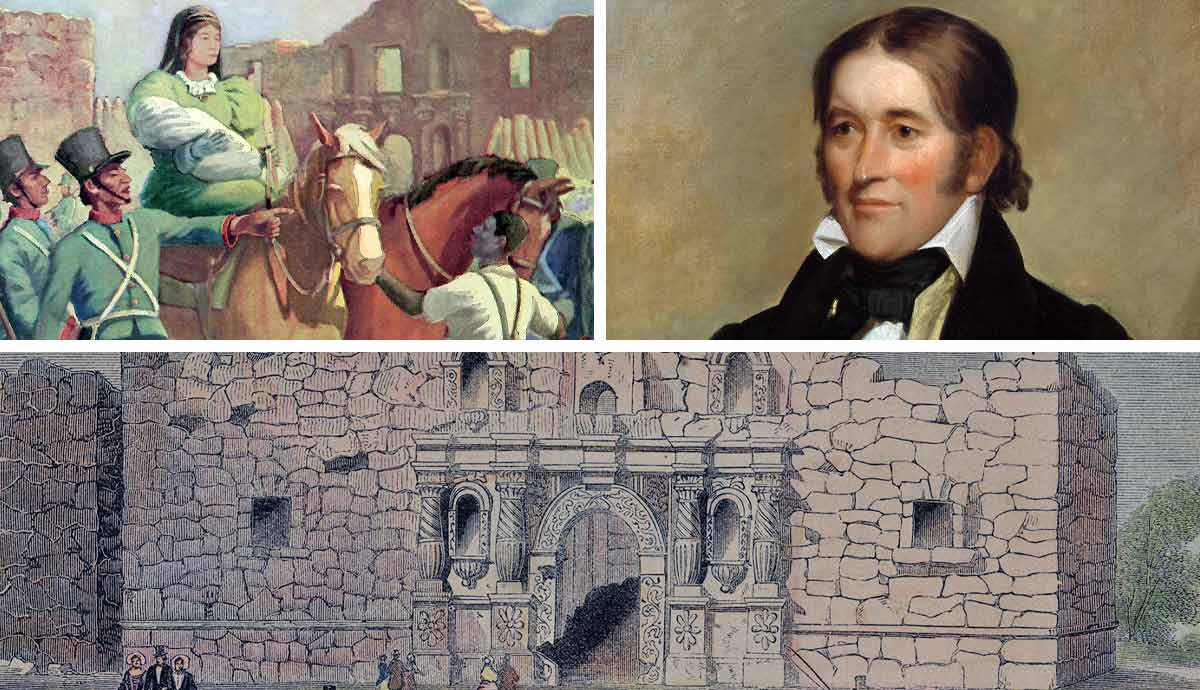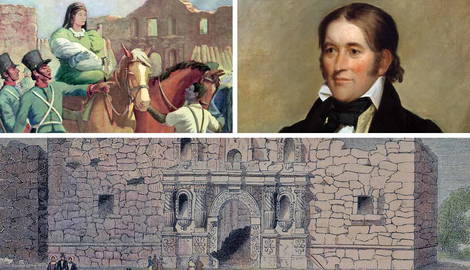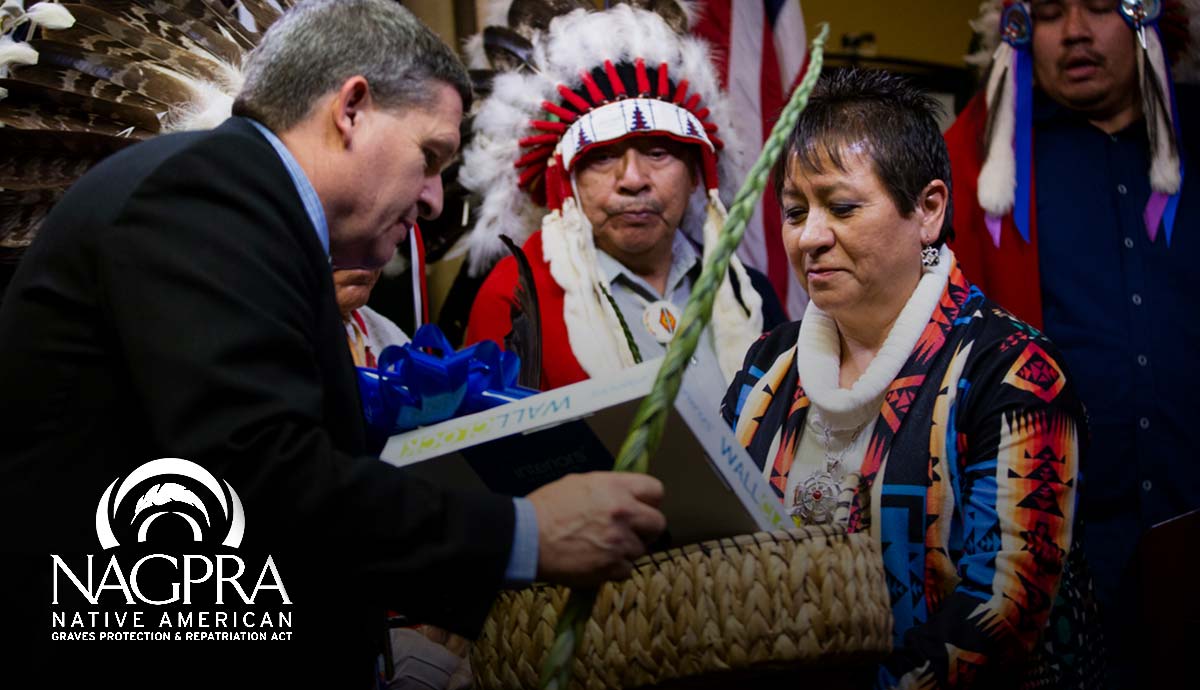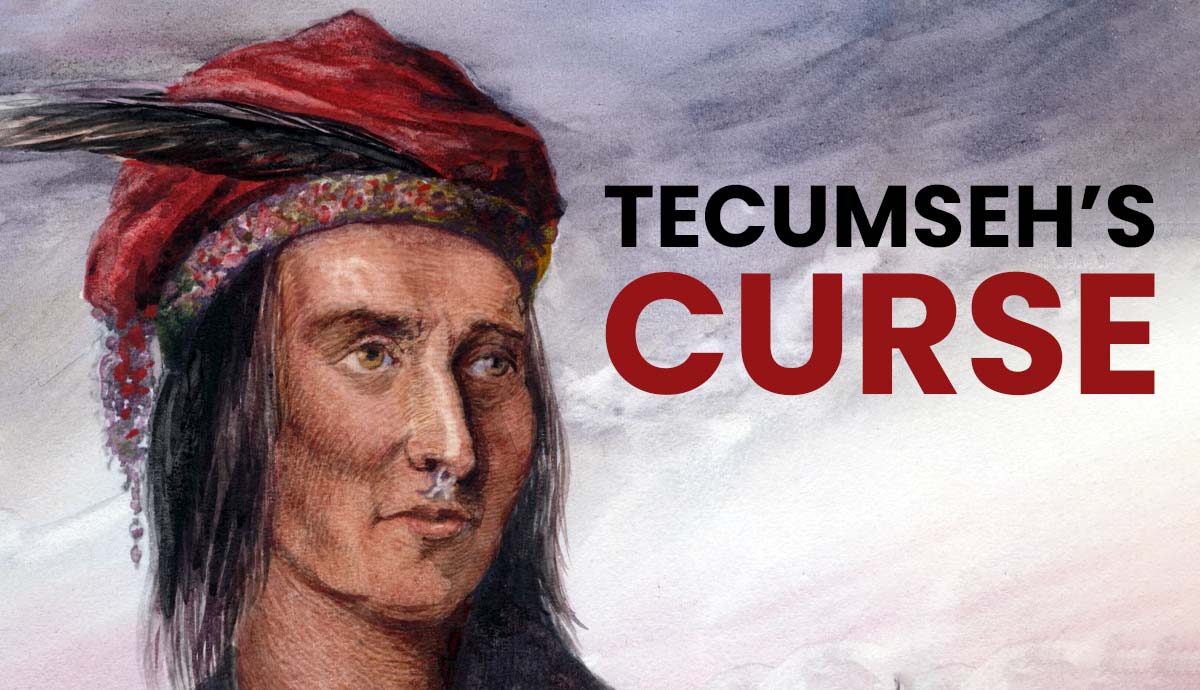
“Remember the Alamo!” is a cry echoed throughout American history. In 1836, the Mexican army led by General Santa Anna attacked the former mission as conflict ensued during the Texas Revolution, in which the future state endeavored to become independent of Mexico. The Texas soldiers and the people who accompanied them inside the Alamo knew they were desperately outnumbered but still managed to hold off the army for 13 days. The participants, most of whom were killed, were lauded as heroes, but what are the stories behind these fabled names?
1. Jim Bowie: Speculator & Slave Trader

James Bowie, better known as Jim, had made a mark throughout the American South before the battle for the Alamo. He was wildly successful in both land speculation and the slave trade. He made a fortune while engaging in these risky businesses but created many enemies for himself along the way, including a man who tried to kill him in 1826. He survived the gunshot wound his rival had inflicted, and as a result of this incident, he gained the item he is most remembered for today: the “Bowie knife.”
Worried for his safety, Jim’s brother, Rezin, equipped him with a large knife, and Jim soon became skilled in its use. The Bowie knife’s fame soon grew when Jim participated in the Sand Bar fight, a duel between two men that erupted into bloody chaos. Despite being wounded several times, Jim’s skill with his knife ensured that he came through the battle formidably, and soon, demand for the Bowie-style knife increased exponentially.

In 1830, Bowie moved his land-speculating enterprise to Texas. He married into one of the most powerful Texas families and earned a reputation as an “Indian fighter” after several conflicts with local Indigenous tribes. He soon joined local military forces and was involved in a number of battles of the Texas Revolution.
Bowie was sent as part of the force to defend the Alamo in 1836, and when the colonel leading the forces at the mission departed, an election was held that resulted in Bowie’s role as co-commander. On February 23rd, Bowie received and rejected the terms of Santa Anna’s army: the Texan’s unconditional surrender.
Soon, Bowie found himself bedridden, suffering from an unknown illness. Historians today believe it was likely a form of pneumonia, but it left him weak and unable to participate in the fighting. He did his best to encourage the men from his sickbed and was periodically carried outside to rally them. Bowie was killed in the battle, shot in the head in his cot, when the Mexican army overran the walls of the mission.
2. Davy Crockett: King of the Wild Frontier… and Congressman

David “Davy” Crockett was a quintessential mountain man and adventurer known for his exploits in the wilds of backwoods America. He served as a militiaman during the War of 1812 but would not return to combat again until his fateful stint at the Alamo.
In the meantime, Crockett spent his days working various positions in government and enjoying his reputation as a sharpshooter and expert hunter. Tales of his exploits were serialized and published in books. In 1821, he was elected as a member of the Tennessee legislature and eventually made his way to the federal House of Representatives.
After several successful years and re-elections, Crockett lost his 1835 congressional election. Finding himself disenchanted with his current state of affairs, he packed up and moved to the country’s newest “wild frontier”: Texas. He had no intention of joining the Texas Revolution but of exploring a new land.
However, time, politics, and a love for excitement soon found Crockett swept into William Travis’ fighting company, which soon occupied the Alamo. Though Crockett died in the engagement, contemporary historians are unsure of the exact manner and timing of his death.
Crockett would go on to be immortalized, perhaps more than anyone else present at the Alamo, his life forever illustrated in books, television shows, and movies. Crockett’s personal motto sums up his approach to life: “Be always sure you’re right-then go a-head!”
3. William B. Travis: A Young Lawyer

Like Crockett, William Barret Travis came to Texas searching for a new lease on life. A failed marriage and a floundering career pushed him to the territory, where he almost instantly clashed with authority. After spending a few months in jail for a disagreement about anti-slavery laws, Travis emerged to build himself a new reputation and successful business as a lawyer.
In early 1836, he was commissioned as a Lieutenant Colonel to join the fight for Texas’ independence. With Bowie, he assumed command of the Alamo’s forces and sent several dispatches asking for reinforcements. The help never came, but the death of Travis’ men at the Alamo served as a rallying cry for military volunteers, and Santa Anna would eventually be defeated by Texas forces at San Jacinto.
Travis’ statement, “I am determined to perish in defense of this place, and my bones shall reproach my country for her neglect,” proved prescient. At only 26, Travis died early in the Battle of the Alamo from a single gunshot wound to the head.
4. Susanna Dickinson: A Testament to the Women Present at the Battle

Although the population of the Alamo at the time of the battle is often thought to be limited to that of soldiers and laborers, the women of the Battle of the Alamo are not to be overlooked. Several noncombatants, mostly women and children, were ensconced in the mission during the battle.
Susanna Dickinson is perhaps the most famous of the survivors. Wife of Almaron Dickinson, a member of the Texian Volunteer Army, Susanna would lose her husband in the battle, but she and her baby daughter, Angelina, lived to tell the tale. Susanna was shot in the leg as she left the mission, but it was not a life-threatening wound.
After the conclusion of the battle, Susanna and other noncombatants were located by Mexican soldiers and taken to General Santa Anna. After interviewing them, the prisoners were released, along with a blanket and two dollars apiece. Susanna was selected by Santa Anna to carry a message to Sam Houston, commander in chief of the Texas forces, warning him that more bloodshed was to come. With a small party, Susanna successfully delivered the missive on March 12.
After this, she found herself widowed, with a baby, and nowhere to go. She floated around with some other survivors, likely following the army for a time before meeting her second husband, John Williams. Williams was abusive, and the following year, Susanna was granted one of the first divorces in what is now Harris County, Texas. She would remarry three more times, one ending in a death, another in a second divorce, and the last one persevering until her death in 1883, just shy of seventy years of age.

Though she moved on in her personal life, Susanna was influential in the lives of Alamo survivors for much of her existence. She testified several times on behalf of survivors seeking pensions or for families attempting to access land grants promised to military members. She gave eyewitness accounts of the events leading up to the siege and battle numerous times throughout her life. Though details of her recollections varied occasionally, her accounts are considered crucial to historian’s understanding of the events.
5. Joe Travis: Enslaved & a Survivor

Although stories generally say that all of the men engaged in the Battle of the Alamo perished, there is at least one man who participated in the battle and lived to tell the tale. Joe, who was given the last name of his enslaver, William B. Travis, grabbed a gun alongside Travis and began shooting Mexican soldiers as they entered the fortress. As Travis’ body servant, Joe was heavily involved in all aspects of the man’s life and, eventually, his death. He was later tasked with identifying not only Travis but that of co-commander Bowie as well.
At the conclusion of the siege, Joe was taken to Santa Anna, who questioned and released him. Joe traveled with Susanna Dickinson to meet with Houston’s army and later headed to the temporary capital, Washington-on-the-Brazos. He was treated like a war hero, believed to be the only man who walked out of the Alamo.
Unfortunately, the executor of William Travis’ estate soon discovered Joe’s presence, and he was taken back into bondage immediately. He was sent to work on the executor’s plantation. In April 1837, Joe was requested to attend a commemorative ball for Sam Houston.

He and another enslaved man were to make their way to the party by horseback and used this opportunity to make a run for freedom. Though the details of the time are unknown, the two avoided the authorities for six months before being recaptured. His enslaver, likely as punishment, rented Joe to another individual for use in “hard labor.”
In 1838, Joe made another escape, heading to the home of Nicholas Travis, William Travis’ brother, in Alabama. He managed to avoid slave catchers on his forty-day journey and remained on Nicholas’ farm for several years after Nicholas paid $650.00 to his brother’s estate for Joe’s purchase. He was forced to change his name after Nicholas’ wife gave birth to a son she named Joseph in 1850. Joe took his older brother’s name, Ben. He outlived Travis and returned to Texas, but details of his later life and death are murky. In 1905, a freedman named “Old Ben” is mentioned in a news article as having traveled to the Alamo with James Travis (the youngest Travis brother), giving hope that Joe eventually gained his freedom.










